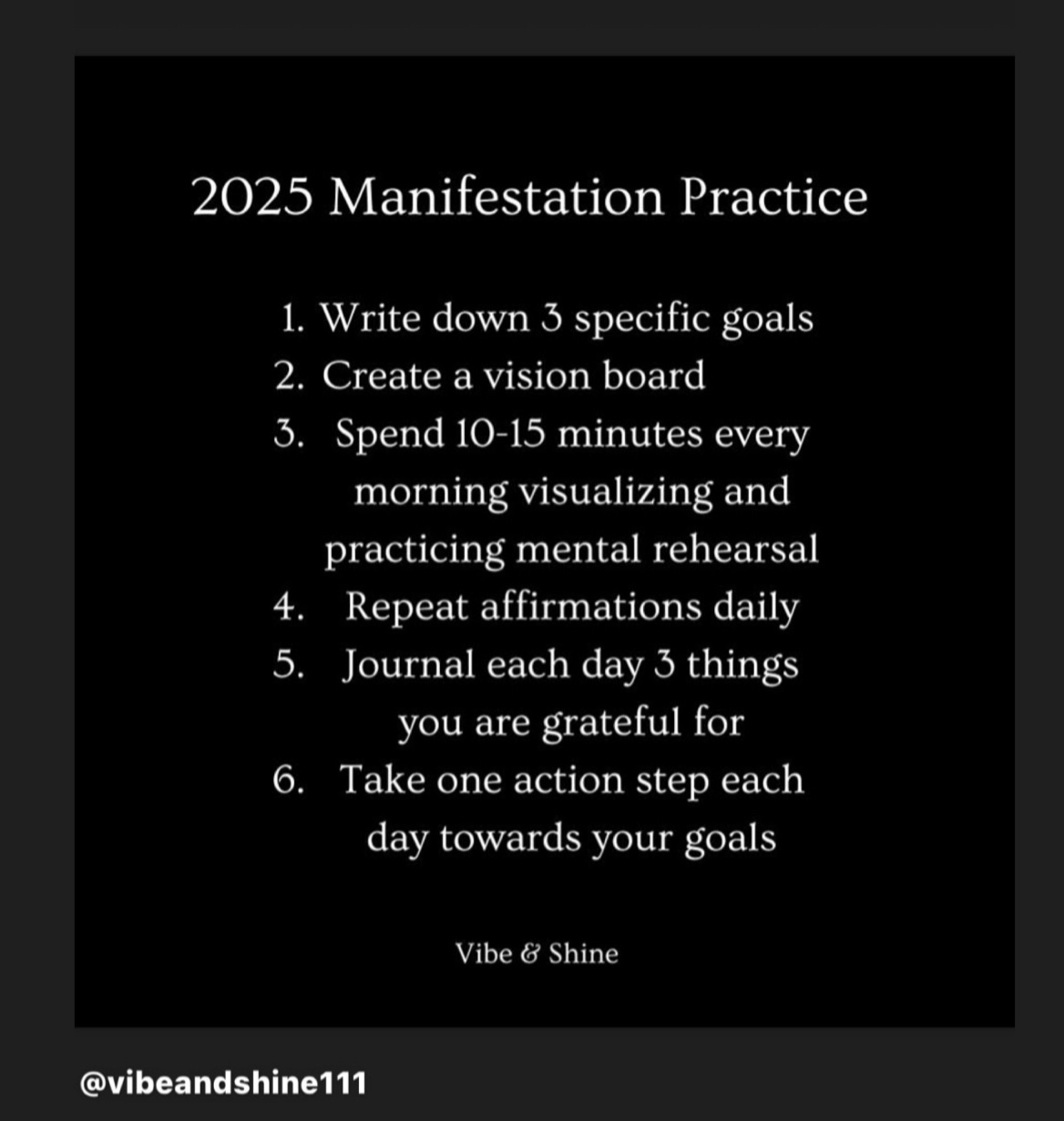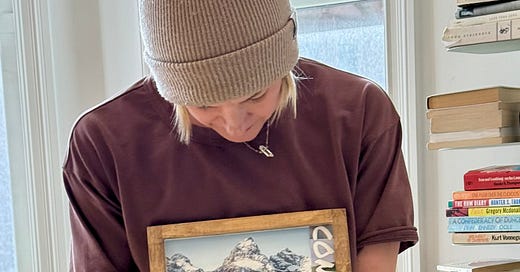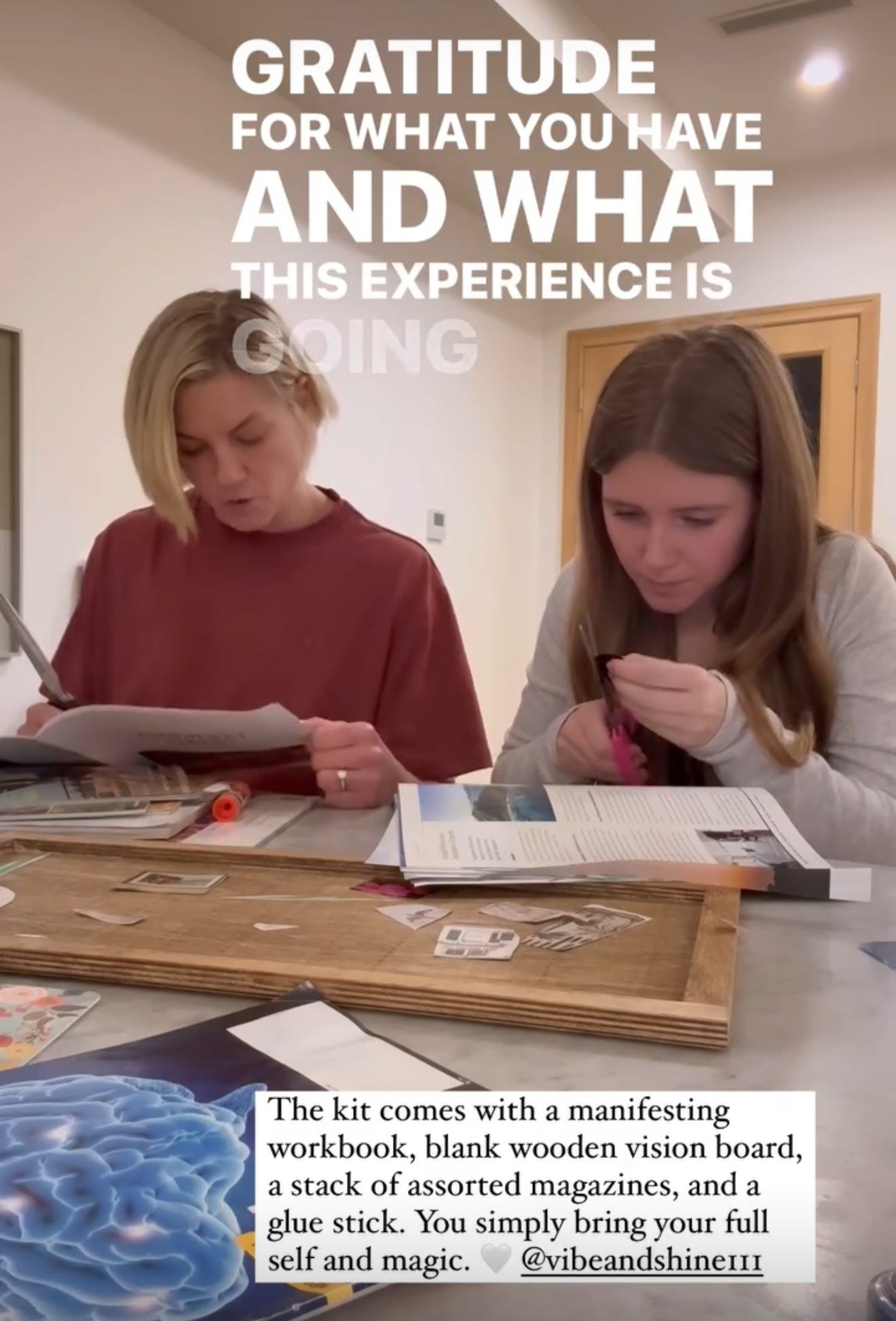The Science Of Manifestation
Is it woo-woo or something more powerful? Here's your body on vision boarding...
Today marks exactly six weeks since New Year Day. And, however you feel about “resolutions,” data suggests that 88% of the people who do set them have abandoned the cause by now. I can feel it during my morning workouts at my local YMCA, where the energized flurry of members peaked in January, and has since dwindled back down to the usual suspects.
The six-week mark is when new habits either solidify or dissolve completely, according to research from Stanford’s Behavior Design Lab. (If you want to go deeper on this topic, I enjoyed this recent Substack on behavior change by the team at Breakthroughs and Blocks.) It makes sense if your resolve has waned. February is a long, cold month. A lot is happening in the world. Add in kids and work and life and…it’s understandable for motivation to melt like a snowflake hitting the sidewalk.
I would argue this all means we’ve reached the perfect time to re-set and recommit to our goals. And if you’re expecting me to tell you to stop pressing the snooze button or to add a scoop of protein powder…
Nope! I’ve got another idea for you. I’m diving deep into manifestation today. It’s a word that practically trembles with woo-woo vibes—that your thoughts can influence real-world outcomes—and I wanted to examine it under a science-backed lens. (For the record: I am pro-science, but I am not anti-woo. I occasionally sage my apartment. And as I write this I’m wearing a necklace with a tiny quartz charm on it.)
Also, I needed to know if the vision board I made with my 13-year-old daughter, Lucy, right as 2024 became 2025, was simply a cute arts-and-crafts project we did together (with Taylor Swift playing in the background, ofc) or something more powerful…
Your Brain On Visualization
When Olympic athletes close their eyes before a competition or a speaker visualizes their on-stage performance, they’re not just hoping for success—they’re literally rewiring their neural pathways for peak performance. Vision boards and manifestation use the same principles.
Here’s how it works. When you vividly imagine yourself performing an action, your brain activates many of the same neural pathways used during actual physical performance. This process, known as “functional equivalence,” has been demonstrated in fMRI studies showing overlapping neural activation patterns between physical and imagined movements.
A couple of admittedly weird (but cool!) studies show this effect in action: People who imagined exercising their little finger for 15 minutes a day showed a 35% increase in finger strength—without moving a muscle—in a famous Cleveland Clinic study from 2004. (Actual physical training showed a 53% increase. So while mental practice wasn’t a replacement for physical training, it was remarkably effective.) Athletes who performed “mental contractions” of their hip flexor muscles increased strength by 24%, compared to a 28% increase in those doing physical training.
There are a variety of complicated, physiological reasons for these gains sans physical practice, but mirror neurons are a big part of it. These specialized brain cells fire both when we perform an action, as well as when we observe or imagine ourselves performing it. Mirror neuron activation during visualization helps create neural templates for success, according to a study in the Nature Neuroscience Review.
The Power of Selective Attention
I recently chatted with Liz Fiores, a former middle school science teacher and the founder of Vibe and Shine. (Liz F found me on IG years ago, and she sent me a vision board when she saw my announcement in December that I was leaving WH after seven years as EIC, and beginning a new chapter.)

She told me about the Reticular Activating System (RAS), which took me down a new research rabbit hole. The RAS is a network of neurons in your brainstem that acts as a filtering system for the 11 million-ish bits of information bombarding your senses every second.
It helps the brain selectively attend to goal-relevant information while filtering out distractions, according to a study in Nature Neuroscience:
You notice more opportunities related to your goals.
You become more aware of resources that could help you.
You recognize patterns and connections you might have missed.
When you consistently visualize specific goals, you’re essentially programming your RAS to prioritize relevant information in your environment.
Enter…Vision Boards
Vision boards help you articulate your goals, making them more concrete, accessible and well-defined. Think of it as a real-world exercise in visualization.
Part 1 is taking some quiet time to think about what you want out of this board. Does it represent career goals? Healthy relationships you want in your life? Travel? Money? Love? Adventure? All of the above? (There’s no wrong answer here, by the way.)
Now, you get to it and make the thing. I used a big stack of old magazines, and started flipping through them, pausing when a word, or phrase, or image caught my eye/heart. You want to choose images and words that make you feel something, in a good way.
Grab some scissors and cut out the stuff that lights you up, arrange it on a board of some sort (a piece of cardboard is fine too), and glue everything down.
Include visual representations of the specific steps needed
Show people engaging in the process, not just an end result
Include images that trigger positive emotional states
Find words and phrases that are meaningful to you
The final step is the hardest one, in my experience. Ideally, you spend time with your vision board every single day. Liz F recommends five to 10 minutes in the morning, and at least another five in the evening. (She also suggested that I do my morning vision board session right after my workout, because my endorphins and “frequency” are so high.)
So keep it somewhere you will see it, and interact with it, regularly. At the six week mark in 2025, my personal goal is to commit to my daily vision board practice. Best case scenario? I bring some big stuff into my life. But regardless, a few minutes of quiet time with words and visuals that light me up has got to make me a healthier, happier human. So win-win.
Sharing your vision board with someone is like giving them a glimpse into your soul. But, I’ll show you mine in this post if you’re part of my inner circle…aka, you’re a Best Case Scenario subscriber. :) Subscribers also get my weekly wellness world news roundup, which is pretty fizzy this week. I’m really glad that you’re here, either way!
Keep reading with a 7-day free trial
Subscribe to Best Case Scenario to keep reading this post and get 7 days of free access to the full post archives.





